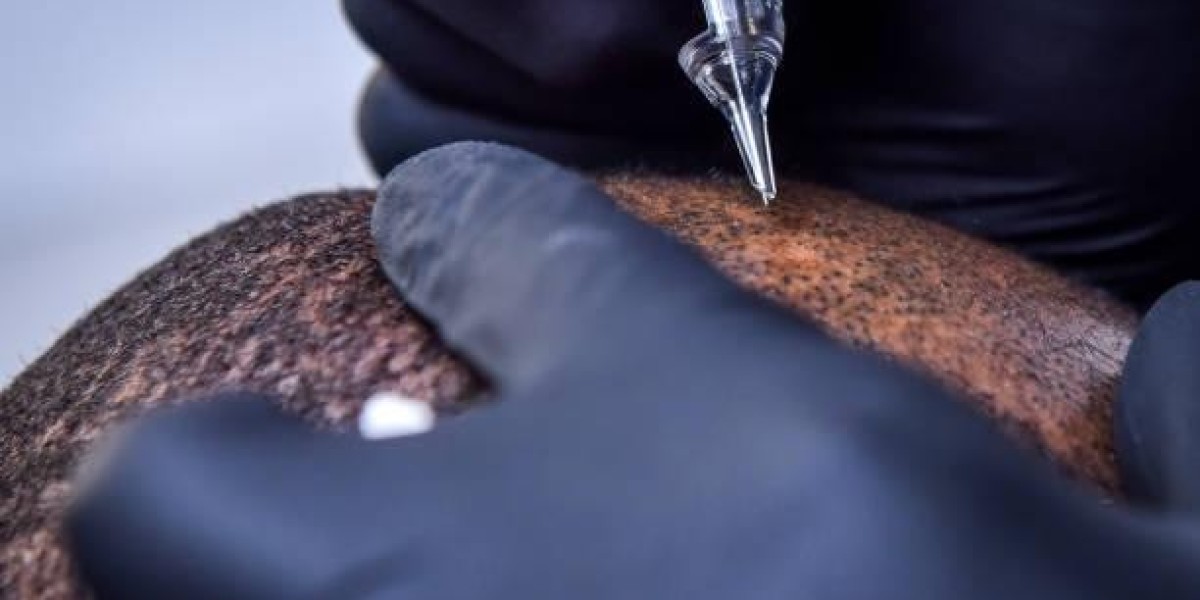Introduction
In the world of cosmetic innovations, Scalp Micropigmentation (SMP) has risen as a revolutionary solution for individuals grappling with hair loss. This comprehensive writing aims to give an in-depth exploration of SMP, covering its definition, the intricacies of the procedure, the transformative impact it has on individuals, and key considerations for those considering this cutting-edge solution.
Defining SMP Hair
Scalp Micropigmentation is a non-surgical cosmetic procedure designed to imitate the build of hair follicles on the scalp. Unlike traditional hair restoration methods that often involve surgery or topical products, SMP hair achieves its effects through the precise application of specialized pigments into the dermal layer of the scalp. This process, akin to tattooing, creates the illusion of closely cropped hair, offering a natural and aesthetically pleasing solution to hair loss.
Understanding the SMP Procedure
Consultation and Design
The SMP journey begins with a detailed consultation between the client and a skilled practitioner. The practitioner gains insights into the client's goals, concerns, and expectations during this phase. Using this information, a customized SMP plan is designed, considering factors such as hairline shape, density, and overall aesthetics.
Pigment Application
The core of the SMP procedure involves the meticulous application of pigments. Using specialized equipment, the practitioner precisely deposits these pigments to replicate the natural pattern of hair follicles. The process is iterative, requiring attention to detail to achieve a realistic and seamless result. Multiple sessions may be necessary to ensure optimal coverage and density.
Post-Procedure Care
While SMP is non-invasive, proper aftercare is crucial for the success of the procedure. Clients are typically advised to avoid sun exposure, excessive sweating, and contact with harsh chemicals during the initial healing period. Following these guidelines ensures the longevity of the pigments and contributes to the overall satisfaction of the client.
The Transformative Benefits of SMP
Restoring Confidence
One of the most profound effects of SMP is its ability to restore confidence. Hair loss can substantially affect a person's self-esteem and self-image. SMP provides a swift and visible transformation, offering immediate relief and a renewed sense of confidence.
Natural Aesthetics
SMP stands out for its ability to provide a natural-looking hairline. The carefully crafted pigmentation mimics the natural growth pattern of hair, creating an appearance that seamlessly blends with existing hair. This natural aesthetic is a key factor in the popularity of SMP as a hair loss solution.
Low Maintenance
Unlike some traditional hair restoration methods, SMP is low maintenance. Once the process is complete, clients can enjoy the appearance of a closely-cropped hairstyle without the need for regular haircuts. This convenience appeals to individuals seeking an effective yet straightforward solution.
Immediate Results
Perhaps one of the most appealing aspects of SMP is the immediacy of the results. Clients leave the procedure with a transformed look, experiencing an instant improvement in their appearance. This quick turnaround contributes to the overall positive impact of SMP on an individual's well-being.
Key Considerations Before Choosing SMP
Skin Type and Sensitivities
The success of SMP is closely tied to the individual's skin type. Practitioners assess factors such as skin tone, texture, and elasticity to determine the most suitable approach. Additionally, clients with known allergies or pigment sensitivities should communicate this information to the practitioner, allowing for appropriate precautions.
Realistic Expectations
Managing expectations is essential when considering SMP. While the procedure provides remarkable results, clients must have realistic expectations. Understanding that SMP creates the illusion of hair follicles rather than actual hair growth helps set appropriate post-treatment satisfaction benchmarks.
Choosing a Qualified Practitioner
The skill and expertise of the practitioner play a pivotal role in the success of SMP. Prospective clients should invest time in researching and selecting a qualified and experienced SMP practitioner. Accreditation, reviews, and a comprehensive portfolio of before-and-after photos are valuable tools in making an informed decision.
Conclusion
Scalp Micropigmentation represents a transformative journey for individuals seeking a solution to hair loss. Its ability to restore confidence, provide natural aesthetics, and offer a low-maintenance approach sets it apart in cosmetic procedures. As the popularity of SMP continues to grow, understanding the intricacies of the procedure, its benefits, and key considerations becomes imperative for those exploring this innovative solution. For many, SMP is not just a cosmetic procedure; it's a pathway to unlocking confidence and embracing a renewed sense of self.
Frequently Asked Questions (FAQs) About Scalp Micropigmentation (SMP) Hair
What Exactly is Scalp Micropigmentation (SMP) and How Does It Differ from Traditional Hair Tattooing?
Scalp Micropigmentation (SMP) is a non-surgical cosmetic technique that involves applying specialized pigments to the scalp's dermal layer, giving the illusion of hair follicles. Unlike traditional hair tattooing, SMP is meticulously designed to copy the natural pattern of hair growth, providing a realistic and subtle appearance that closely resembles a natural, closely cropped hairstyle.
Is SMP Only Suitable for Severe Hair Loss, or Can It Address Different Stages of Hair Thinning?
SMP is a versatile solution that is good for various stages of hair loss. Whether dealing with receding hairlines, thinning crowns, or complete baldness, SMP can be customized for different scenarios. The flexibility of SMP makes it an inclusive option for both men and women experiencing various degrees of hair loss.
How Long Do SMP Results Last, and What Maintenance is Required?
SMP results are long-lasting, and the longevity of the pigments depends on factors such as individual skin characteristics and adherence to aftercare guidelines. Generally, the pigments retain their color for an extended period. As for maintenance, SMP is known for being low maintenance. Regular haircuts are unnecessary, but clients are advised to follow specific aftercare instructions, especially during the initial healing period, to ensure the vibrancy and longevity of the results.
Are There Any Risks or Side Effects Associated with SMP, and How Can I Ensure a Successful Procedure?
While Scalp Micropigmentation is generally considered safe, individual experiences may vary. It's fundamental to choose a qualified and experienced practitioner to minimize risks. Potential side effects may include minor redness or swelling following the procedure, which typically subsides within a few days. Clients with allergies or sensitivities to pigments should communicate this to the practitioner, and a patch test may be recommended. Thoroughly researching and selecting a skilled practitioner, following pre and post-procedure guidelines, and having realistic expectations contribute to a successful SMP experience.








